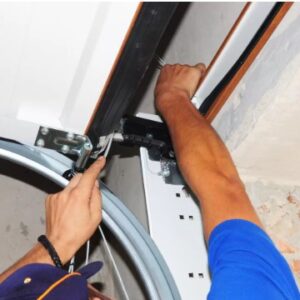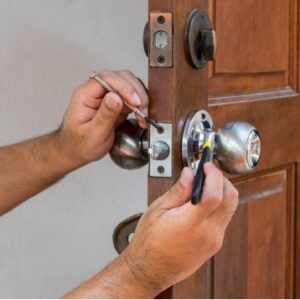A well-balanced garage door moves smoothly, stays in place when halfway open, and places minimal stress on its cables, springs, and opener. When the tension in the cables is off, the door may jerk, become uneven, or stop working altogether. Understanding how cable tension and balance work together can help homeowners recognize early signs of trouble before they become costly repairs. In this post, we will explain how garage door balance affects performance, what tension adjustments involve, and when it is time to call professionals for safe and accurate service.
The Role of Cable Tension in Garage Door Operation
Every garage door relies on a counterbalance system that uses springs and cables to offset its weight. The cables run from the bottom of the door to the torsion spring system above it, carrying the load and allowing the door to open with minimal effort. Proper cable tension keeps the door aligned and ensures both sides lift evenly.
When one cable becomes tighter than the other, the door can tilt or strain one side of the track. Over time, this imbalance may lead to frayed cables, bent tracks, or broken springs. In severe cases, the door may jam or fall unexpectedly, creating a safety risk. Maintaining correct cable tension is therefore essential for both performance and safety.
Recognizing Signs of Improper Tension
We can often tell something is wrong with cable tension just by how the door moves. A balanced door opens smoothly and stays in any position when released. If it falls quickly, rises on its own, or hangs unevenly, the tension is likely off.
Grinding noises, visible cable wear, or a door that appears crooked when closed also suggest uneven tension. Sometimes the problem originates from the springs rather than the cables, but both systems work together. If one fails, the other is affected.
We recommend stopping operation immediately when the door feels unusually heavy or unsteady. Continuing to use it can strain the opener or cause further damage to the balance system.
Why Balance Adjustment Matters
A properly balanced door protects the entire mechanism. The opener motor, tracks, rollers, and hinges all rely on even movement. When the balance is off, the opener works harder than it should, wearing out gears and belts prematurely.
Balance adjustments are not only about convenience but also about extending the lifespan of the entire door assembly. Even small imbalances can double the wear rate on moving parts. For this reason, many technicians check and adjust balance during every maintenance visit.
It is also a matter of safety. A heavy unbalanced door can crush objects or injure anyone standing beneath it if it drops suddenly. Keeping the system in balance ensures the door remains steady at every point in its travel.
Testing Garage Door Balance at Home
Homeowners can perform a simple balance test safely. Start with the door closed. Pull the emergency release cord to disconnect the opener, allowing the door to move freely by hand. Lift the door about halfway and release it.
If it stays in place, the balance is likely good. If it slides down or moves upward, tension needs adjustment. A door that slams shut or feels extremely heavy is a clear sign the springs have lost tension.
Never attempt to adjust torsion springs or cables on your own. They store enormous force and can cause serious injury. Testing should always be visual and manual only. Once an issue is identified, it is best to schedule professional service for correction.
The Process of Cable and Balance Adjustment
Cable tension and balance adjustments require precise calibration. Professionals begin by inspecting the cables for wear, corrosion, or fraying. They check that the drum grooves are clean and that the cables wind evenly around them.
The next step is spring adjustment. Torsion springs are turned in small increments to add or release tension until the door remains balanced in the mid position. Both sides must be equal, otherwise the door will twist or strain the tracks.
Once the springs are set correctly, the technician aligns the cables and confirms that the door opens and closes evenly. They may also lubricate the bearings, rollers, and hinges to ensure smooth operation. A final test involves connecting the opener again and verifying that the motor operates with minimal strain.
You can learn more about professional maintenance services such as garage door repair in Ottawa to understand how proper tension and balance adjustments fit into broader garage door upkeep.
Safety Precautions During Adjustment
Spring and cable tension systems are among the most dangerous components of a garage door. Attempting to adjust them without training can cause severe injury. The springs store high torque, and even a minor slip can release sudden force.
Professionals use specialized bars, locking pliers, and winding cones to control tension safely. They follow precise manufacturer instructions for the door’s weight and size. Homeowners should never use makeshift tools or try to tighten a loose cable by hand.
Regular visual inspections, however, are safe and encouraged. We can check for fraying, uneven cable paths, or rust on the drums and call for service before the system fails. Early detection is key to preventing accidents.
Common Causes of Cable Imbalance
Cables can lose tension over time for several reasons. Natural wear is one of them. Each time the door opens and closes, cables wind and unwind around the drum, gradually stretching.
Moisture, dust, or lack of lubrication can also cause one cable to move less freely, creating uneven tension. A small amount of rust can make a noticeable difference in movement.
Improper installation is another frequent cause. If the cables were not wound evenly during the original setup, balance issues may appear later. Regular tune-ups help catch and correct such problems early before they lead to complete failure.
The Impact of Temperature on Door Balance
Seasonal temperature changes can subtly affect door balance. Metal expands in heat and contracts in cold, changing the tension slightly. This is especially noticeable in areas with harsh winters like Ottawa.
During cold weather, cables can stiffen and springs may lose a bit of elasticity. The door may move slower or feel heavier. While this change is normal, a technician can fine-tune the system for smoother winter operation.
Scheduling seasonal maintenance helps keep balance consistent throughout the year. It also prevents sudden breakdowns during freezing conditions when metal parts are under additional stress.
Preventive Maintenance Tips
We can avoid most balance and tension problems with regular care. Keeping moving parts lubricated reduces friction and prevents uneven wear. Using a high-quality silicone-based spray twice a year on rollers, hinges, and springs can make a big difference.
Cleaning the tracks also matters. Dust and debris can make the door tilt slightly, tricking us into thinking there is a tension issue. A simple wipe with a damp cloth keeps the track clear and reduces unnecessary strain.
Testing balance every few months is another good habit. It only takes a minute and can alert us to changes before they become serious. Routine maintenance ensures the system stays safe and extends the lifespan of the entire setup.
When to Seek Professional Help
We should contact professionals any time we notice visible wear, jerky movement, or uneven lifting. These are signs of deeper mechanical issues that require specialized tools to correct.
If the cables have slipped off the drum or appear frayed, stop using the door immediately. Operating it under such conditions risks complete failure. Professional technicians can replace the damaged parts and recalibrate the system safely.
For quick assistance or scheduling, homeowners can contact us and request an inspection to restore safe balance and tension.
Extending the Life of Garage Door Cables
Cables typically last for years if the door remains balanced and the system receives periodic care. Applying light lubrication to the lower sections where cables bend helps prevent corrosion from road salt and moisture.
Inspecting the bottom brackets is also useful. They anchor the cables and are exposed to dirt and water that can cause rust. Keeping them clean ensures the cables move freely without binding.
Replacing cables in pairs is another smart practice. When one fails, the other is likely close to the end of its lifespan. Replacing both ensures consistent tension and smoother operation afterward.
Importance of Professional Inspections
Even with regular maintenance, annual inspections from qualified technicians remain essential. They have the experience to spot subtle signs of wear that homeowners may overlook.
Professionals measure spring tension precisely, check drum alignment, and ensure the door’s weight is distributed evenly. They can also test safety features like auto-reverse sensors to make sure the opener stops when an obstruction is detected.
Routine inspections give peace of mind that the system is safe, balanced, and efficient. It is always easier to correct minor adjustments during an inspection than to deal with an emergency breakdown later.
Balancing Energy Efficiency and Performance
A well-balanced garage door does more than move correctly. It also helps improve energy efficiency. A door that seals properly at the bottom and sides keeps warm air inside during winter and prevents heat from entering in summer.
Imbalanced doors often leave small gaps, letting air flow freely between the garage and outdoors. Over time, this can increase energy costs. Keeping the system balanced ensures the weatherstripping contacts the floor evenly, improving insulation and reducing drafts.
FAQ
How often should I check the balance of my garage door?
Every three to six months is ideal. Seasonal temperature changes and regular use can shift tension over time, so frequent testing helps maintain performance.
Can I adjust cable tension myself?
No. Cable and spring tension adjustments require special tools and training. Attempting to do it yourself can be dangerous and may cause serious injury.
What happens if my garage door is unbalanced?
An unbalanced door puts extra strain on the opener, wears out parts faster, and can become a safety hazard. The door may also fail to open or close fully.
Why does my garage door squeak or jerk when moving?
Squeaking can come from dry rollers or hinges, while jerking may indicate uneven cable tension or track obstruction. A tune-up and lubrication usually solve minor issues.
How can I prevent cables from fraying?
Regular cleaning, proper lubrication, and balanced operation reduce friction and wear. Replacing old or rusted cables before they fail keeps the system safe and reliable.




